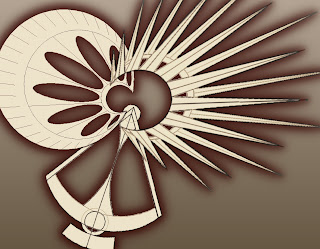Note from Val
Yesterday I chose Clive's tree, in Greenwich Park.
Clive had lots of links with Greenwich : he worked in Greenwich local authority's planning department for a number of years (mainly on the conservation of architecturally important buildings) and often took a sandwich lunch in the Park. In later years he was a frequent visitor to the National Maritime Museum, which adjoins the Park, and he and I would regularly do a Saturday trip to Greenwich town centre (which he knew like the back of his hand, having had a
planning role in the abortive bypass scheme), to visit the market and rummage in the maritime bookshops before enjoying 'tea and a bun' somewhere. The Old Royal Naval College, now part of the University of Greenwich, houses the Greenwich Maritime Institute where Clive did his
recent MA studies in maritime history. And I've now discovered another link he had with Greenwich, and specifically with the Park : a Royal Parks Review of Greenwich Park was published in 1995, and Clive represented Greenwich Environment Forum at the conference held to take forward the recommendations. All the more fitting, then, that he should (at least in spirit) become part of this environment.
Credit for initiating the idea of a memorial tree goes to Clive's American friends, but we took it up enthusiastically on this side of the Atlantic, and I got in touch with the Royal Parks Foundation. A 3-figure sum allows you to dedicate a specific tree in the park of your choice, a 4-figure sum gets you a "Remarkable Tree" : one of the special trees which stand out for their age, size or rarity, or because they have a unique history or wildlife. Thanks to the generosity of Clive's many friends, the donated funds now exceed the minimum, so an additional contribution from Clive's savings has put us into the remarkable league. All tree-sponsorship monies, I have checked, are allocated to the tree-maintenance budget of the chosen Royal Park. The Foundation's Projects Officer, Eleanor Shakeshaft, and the Assistant Park Manager of Greenwich Park, Stuart Goldsworthy, have spent some weeks identifying possible trees for me. Yesterday the three of us did a tour of a dozen candidates, on a beautiful crisp and sunlit day. I'd asked for an oak, if possible, so we looked at examples of several different species of oak, as well as a selection of veteran sweet chestnuts, of which the Park has the greatest stock in the country. The shortlist was easy, and the final choice easier still, scoring high marks for site and prospect as well as tree-ness : the clear winner was a Turkey Oak, about 150 years old. So, not a
native English oak, but they have few of those in Greenwich Park, and none of any grandeur.
Clive's oak, a splendid specimen, stands in prominent isolation on a tree-edged plateau at the top of the hill, near the western boundary of the Park. It's in the Grassland, an area deliberately left rough to encourage all the flowers, insects, fungi and nesting birds that thrive on an acid soil (parkland pH normally 7, here 3-5 because 171of 7 adjacent gravel beds). Now, in winter, the grass is low and tussocky, but Stuart says in summer it's about a foot high, which makes this
mini-plateau a favourite haunt of nudist sunbathers - you have been warned.
The view in every direction has something of interest. Starting from the south and turning clockwise : two gently drooping cedars, historic McCartney House (family home of General Wolfe of Quebec), the graceful spire of a local church, glimpses of Clive's beloved Thames and, beyond, the City and Docklands skyline, then a Henry Moore statue just 50 yards away, the Royal Observatory (and the invisible Greenwich Meridian at 0° longitude), several Anglo-Saxon tumuli, and an avenue of veteran sweet chestnuts. There are no traffic routes nearby, so
the only traffic noise to disturb the birdsong here is from occasional aircraft Walk a
hundred yards to the right of Clive's tree and you cross from the western to the eastern hemisphere, turn another score yards towards the river and you look down over the beautiful 17th-century complex of the Old Royal Naval College, famously painted by Canaletto from the
opposite riverbank.
The brief dedication ceremony will be on Sunday 24 May, Clive's 75th birthday. Time to be decided, but plans are afoot to celebrate with bottles of bubbly and a communal picnic. You are all very welcome.
.AOLWebSuite .AOLPicturesFullSizeLink { height: 1px; width: 1px; overflow: hidden; } .AOLWebSuite a {color:blue; text-decoration: underline; cursor: pointer} .AOLWebSuite a.hsSig {cursor: default}

 3-D renderings by; Eric
3-D renderings by; Eric 






 These shops are just up the street from us; an old farm that's been bought out by a developer...Kevin decided to stop one day & find out what the deal is. So, we just found out that we can purchase the 2 shops & the little grain silo!!! The price is good enough that I just can't see passing up the
These shops are just up the street from us; an old farm that's been bought out by a developer...Kevin decided to stop one day & find out what the deal is. So, we just found out that we can purchase the 2 shops & the little grain silo!!! The price is good enough that I just can't see passing up the 

